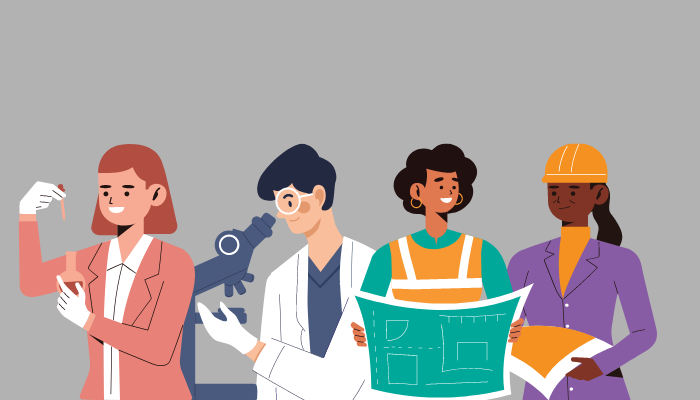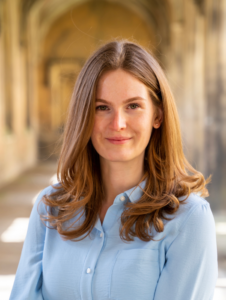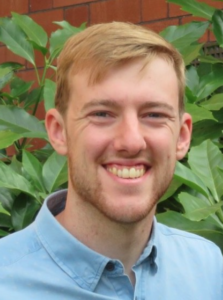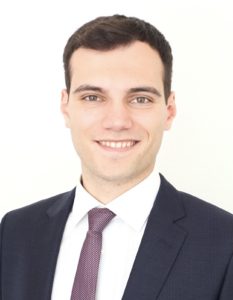
Name: Deborah Wehner
Degree: PhD in Earth Sciences
New field: Tech
Current Role: Software Developer Engineer at Amazon
I recently graduated with a PhD in Computational Seismology from the University of Cambridge. Whilst I really enjoyed the technical aspects and lifestyle* of my PhD, I realised that academia wasn’t for me. In my new job at Amazon, I am pushing the boundary of what’s possible with voice and visuals to create new shopping experiences – turns out an audio stream recorded by Alexa doesn’t look too different from a seismogram!
I knew very little about Big Tech before I arrived, but I have been able to transfer other knowledge and skills. In particular, my PhD has taught me perseverance and not to sweat the small stuff. I am greatly enjoying getting to work as a team and see the impact my work can have; my code changes can go into production within hours to improve the shopping experience for customers all around the world.
*Gym classes during lunchtime and the incredible fieldwork opportunities – hiking through the Bornean jungle and witnessing the 2021 Fagradalsfjall volcanic eruption in Iceland were highlights of my PhD!
Name: Patrick Ball
Degree: Masters and PhD in Earth Sciences
New field: Catastrophe Risk Modelling
Current Role: Research Associate at Verisk
My PhD focused on using geochemical, geophysical and seismological data to constrain the temperature structure of the upper mantle. I loved the social side of academia, the fieldwork, the breadth of subjects I got to learn about, and the satisfaction of generating new information and ideas. Therefore, after completing my PhD, I decided to continue down the academic rabbit hole. I undertook two postdoctoral research positions totaling three years at Australian National University and Colorado State University. While living in new places, meeting/collaborating with new people is fun (even during covid), the pressure of short-term contracts and never feeling settled meant that I decided to leave academia.
I have recently begun working as a Research Associate at Verisk Extreme Event Solutions – a prominent catastrophe modelling vendor. Natural disasters, such as hurricanes, earthquakes, and floods, can cause loss of life and huge amounts of economic damage. Catastrophe models provide insurance companies and governments with probabilistic calculations of the likelihood, location, intensity, and impact of future natural disasters so that they can plan accordingly. Earth scientists are invaluable throughout the catastrophe modelling industry. Developing catastrophe models, analysing model outputs and underpinning assumptions (this is where I fit in), and using catastrophe models within insurance companies and brokerages to guide business decisions, all rely on a keen understanding of geological, hydrological, and meteorological processes. My job allows me to continue to do cutting-edge geological research constructing and manipulating computational models, but also offers the opportunity to work within a larger organisation pushing for a common, long-term goal with immediate real-world impact.
Name: Sem Demir
Degree: Masters in Applied Geophysics
New field: Financial Services Strategy Consulting
Current Role: Consultant at EY in Zurich, Switzerland
I graduated with a masters in Applied Geophysics from the IDEA League consisting of ETH Zurich, TU Delft and RWTH Aachen. Afterwards I worked as a researcher for one year at ETH Zurich, Switzerland, in which I developed a software for analysing induced seismicity during hydraulic stimulation experiments.
Following my year in research, I started looking for roles in the reinsurance industry. I have been interested in the financial industry for a long time, having completed a minor in finance during my undergraduate studies. I worked for two years in a business development team at Swiss Re in Zurich, the world’s largest reinsurer. In this role I worked both on the technical development of insurance and risk intelligence solutions as well as the sales and marketing of these solutions, which involved interacting with direct insurance clients globally. I worked on many diverse projects, including a satellite aided digital agriculture insurance product, a climate change risk solution and an internal flood catastrophe modelling solution. While working outside of academia, I was able to learn new general business skills and knowledge of the insurance industry while still using the technical skills I gained in geophysics.
Hereafter I started a role in financial services consulting. I have always had an interest in consulting and wanted more experience in solving a range of business problems across the financial industry, learning more about how financial institutions operate. In November, I’m starting at EY as a financial services strategy consultant. The technical skills gained during my masters are less relevant in this role, but the general problem-solving skills I gained through my STEM background will remain very important.




Xin Xianwu
The driving force of earth evolution is the fundamental problem of earth science. Although scholars have long found that plate theory cannot explain the causes of intraplate earthquakes and geomorphology, it still takes time to allow interdisciplinary new theories to emerge.
It is normal for young geodynamic people to learn some other skills in order to live. Don’t lose your major. Because the earth science is on the eve of great changes. This change requires the support and participation of countless scholars.
Reference
https://doi.org/10.5446/48979